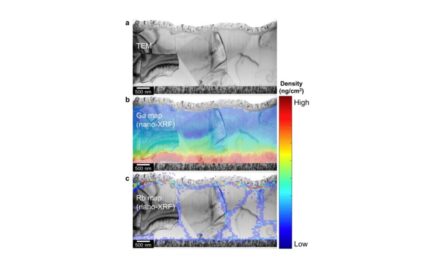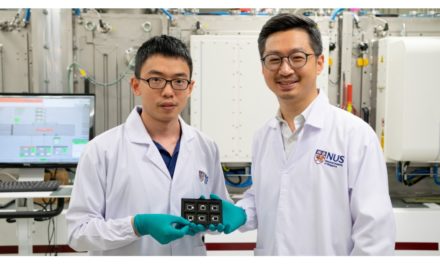- NUS has developed a new triple-junction perovskite solar cell, claiming a record 27.1% efficiency
- The team swapped bromide for cyanate to integrate with the perovskite solar cell
- When used as a middle layer with perovskite and silicon solar cells on either side, the triple-junction cell generated higher efficiency
- It remained stable and functioned at over 96% capacity after running at maximum power for 300 hours
The National University of Singapore (NUS) has announced a ‘world record’ power conversion efficiency for triple-junction tandem solar cells. It has achieved 27.1% efficiency on a 1 sq. cm. absorption area, using perovskite and silicon tandem cells.
To achieve this high efficiency, the team of Dr. Liu Shunchang and Assistant Professor Hou Yi developed a new cyanate-integrated perovskite solar cell. The efficiency is certified by an accredited independent PV calibration laboratory.
A novel pseudohalide, cyanate was used as a substitute for bromide, which is a halide-group ion used commonly in perovskites. Their analysis found that cyanate can help perovskite solar cells achieve a higher voltage of 1.422 volts compared to 1.357 volts for conventional perovskite cells. There is also a significant reduction in energy loss.
The cell remained stable and functioned at above 96% capacity even after operating at maximum power for 300 hours under controlled conditions.
Encouraged by these results, the team then assembled the cyanate-integrated perovskite solar cell within a layer of perovskite solar cell and silicon solar cell on top and bottom to create the triple-junction perovskite-silicon tandem solar cell. Their work was recently published in Nature scientific journal.
NUS now aims to scale this technology to larger modules without compromising efficiency and stability, with a focus on innovations at interfaces and composition of perovskites.
Considering the theoretical efficiency limit of over 50% for triple-junction perovskite/silicon tandem solar cells, the team sees immense scope for further enhancements, especially in applications with limited space.
Earlier, Fraunhofer ISE of Germany found higher efficiency potential for triple-junction cells when compared to dual-junction tandem cells (see Fraunhofer ISE Sees Excellent Properties For Solar Cell).
In May 2022, NREL from the US claimed 39.5% terrestrial and 34.2% space efficiency for triple-junction solar cells using a quantum well for the middle layer (see 39.5% Efficiency For Triple-Junction Solar Cells).















